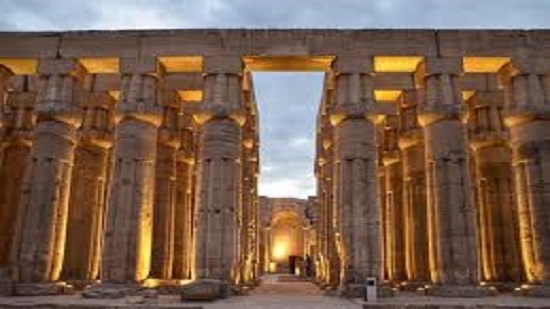This is the city of the hundred gates, as known by ancient Egyptians, or Luxor as we know it today. I have been longing to revisit the place where most of my cherished memories took place. Luxor is the city that witnessed the secrets and stories of thousands of years -- yet to be told.
Luxor s visual identity
by Al Ahram
Opinion
00:12
Thursday ,12 December 2019

Since the discovery of the treasures of Tutankhamun some 97 years ago, Luxor has been in dire need for a face-lift. Efforts to renovate the Avenue of Rams, one of the iconic Pharaonic landmarks, had been kept in the drawers for decades. The fact that the urbanisation of the city has swept almost 70 percent of the avenue made it next to impossible to renovate the area. The avenue stretches along Luxor for 2,750 metres from Karnak to Luxor Temple.
In 2009, the former governor of Luxor, Samir Farag, exerted remarkable efforts to bring to the fore the urgent need to renovate the Avenue of Rams. But the lack of funding brought those efforts to a standstill and the whole idea was shelved in 2011 despite its importance to attract more tourists to Luxor. However, the instructions given by President Abdel-Fattah El-Sisi to pursue the renovation works on the avenue had a miraculous effect.
For more than 3,000 years, kings, queens, top officials and pastors passed along the Avenue of Rams where 1,200 pieces of exquisite arts and crafts identify the avenue and create a glorious, lively scene of ancient Egypt. The 12,000 statues of rams with lions bodies and men s heads, dot the passage which, when renovated, will turn Luxor into an international open museum. The world will keep a close eye on the details of such a magnificent archaeological event.
There are many mega projects which will soon be inaugurated in Luxor, like the international Olympic city in new Thebes and an international stadium. The two facilities will host sports activities, camps for European and national sports clubs. Moreover, the Luxor University will have a new well-established headquarters to manage its scattered schools and play a leading role via its ties with various Arab and international universities.
During my recent visit to Luxor, I had the chance to see the accomplishment of almost 80 percent of the "Visual identity of Luxor" which turned the city into a historical site with modern features. From the very moment of landing at Luxor International Airport to the Nile Corniche, I saw boats colourfully decorated and horse-drawn carriages along the roads, giving the city an exquisite flavour.
The "Visual identity of Luxor" is the project presented by the students of the German University in Cairo at the sixth National Youth Forum, held at Cairo University. The idea of the project, which was embraced by President El-Sisi, is to establish a visual identity for each of Egypt s governorates. In collaboration with the Engineering Establishment and the German University, a small army of 4,000 students, teachers and professors have been working around the clock to implement the designs of Yasmine and Ghada Waly; two students from the School of Applied Arts at the university. For almost two years now, the team has been able to create a new vision marked with labels and logos that match the city s history, placing them throughout the city, thus embedding an international brand for Luxor. The majority of designs employ semi-hieroglyphic letters and colours that reflect the long history of the well-branded city of Luxor.
This visual identity is all around the city. You can almost see the ancient city that has gloriously evolved into a modern beautiful city.
The governor of Luxor, Mostafa Alham, said the new visual identity calls for a better understanding and a drastic change of behaviour and the collective approach to the concept of tourism which can be achieved with the efforts of the young people in the city. The visual identity of the city, according to the governor, is branded at the vital archaeological sites in a unified form.
The success story of the visual identity in Luxor is the beginning of a nationwide plan to focus on the main themes and features of each governorate in Egypt.


